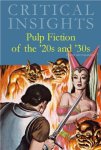
Let me tell you of the days of print magazines!
For those of you who don’t publish or aspire to publish your writing, part of the process often involves familiarizing yourself with magazines. Back in the print-only days, that meant ordering sample copies from a publisher, or subscribing, or (increasingly rarely as newsstands waned) going somewhere to purchase a copy in person. These days even print-only magazines often have samples of their fiction online, partly to lure would-be readers, partly to give writers an idea of what (not) to submit. This summer I was doing some cleaning and was reminded that over the years, I’ve amassed a small horde of sample copies. What you see here is a tiny fraction of it, as I have piles elsewhere of magazines I subscribed to or bought an issue or two of, including Cemetery Dance, F&SF, Grue, Deathrealm, Weird Tales, etc..
A pleasant surprise was seeing names that are familiar to me today from tables of contents, social media, conventions, and other parts of the publishing world: Allen, Cisco, Kilpatrick, Pugmire, Schwader, Schweitzer, Thomas, and many more. Some of those authors are still publishing in magazines, big and small. Some write full time, some part time. Some have had a lasting impact on readers and writers who came after them and, in some cases, followed their models.

A squamous menagerie…
I’d like to think the continued presence of these authors in the field says something about continuity, and about what makes a writer a writer (writing, yes, but publication, too). Once upon a time I bought into the idea of a standard template for authors’ literary lives, and up until a few years ago I was still thinking in those terms. The disruptions caused by publisher consolidation, e-books, etc., has changed that for me, but also taking a long, hard look at the market, and realizing that the Big 5 currently have only a sliver of a sliver of a niche for dark fiction, and it’s parceled out across the bookstores. (I’m skipping over YA and graphic novels, which are different kettles of fish, and neither of which I really write.) Instead, there are—as there were hundreds of years ago—various means for making your work public. The familiar names that I see belong to people who learned that lesson and published consistently wherever there was room, or who found a way to make room for themselves.
Less happily, the names I didn’t recognize in these magazines are as disproportionately female as those I do recognize are male. What happened to them? Hard to say, given how many writers publish a story or two and then vanish, and I don’t know every corner of the field, but many of the TOCs I saw do clearly uphold the idea of horror as a boys’ club (awareness of which has led to various attempts at correction), and there is a host of reasons why women historically have published less often than men. Personally I love the broadening of the field in recent years. Long ago I was reading Brite, Jackson, Rice, etc., and in the last decade authors like Carter, Kiernan, Link, Llewellyn, etc. The writer just starting out today who looks back in twenty years will have a new group of authors to consider foundational, and I think it probably goes without saying, but that group will look different in more ways than one.






